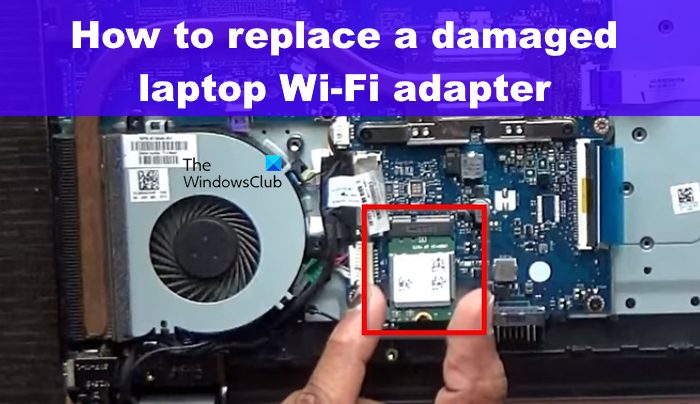There may come a time when your laptop’s Wi-Fi adapter fails to work properly. When this happens, many owners may feel the need to purchase a new device, but this does not need to happen if you know how to replace the damaged WiFi adapter yourself.

Fixing such an issue will require you to open the laptop, so with that in mind, we expect that you already have the tools and know how to pull a screw or unsnap a clip, so we are not going to explain such things.
The easiest way to solve an issue where the Wi-Fi adapter is broken is to purchase a USB adapter and plug it in. No hassle, just simple plug-N-play, but that is just too easy, boring, and uninteresting so we’re not going to discuss that option any further.
How to replace a broken laptop Wi-Fi adapter?
When it comes down to replacing a damaged adapter that does not work, you must check for easy access, remove the panel, locate the adapter, remove it, then replace it. It’s a straightforward procedure in most cases, more so if your laptop is not a headache where repairs are concerned.
- Check the access panel for easy entrance
- Remove below panel
- Locate the Wi-Fi adapter
- Remove the cables
- Remove the screws
- Insert the new Wi-Fi adapter
- Reattach the access panel and boot into Windows
1] Check the access panel for easy entrance
To begin, you must first check the access panel to find out if gaining an entry is not too difficult. Check the bottom of the device for entry areas. They come in the form of screws, or in some cases, clips. The access panel is usually plastic, so be careful when inspecting it.
2] Remove the below panel
Next, you must prepare to remove the access panel. If it is sealed by screws, then get your screwdriver and carefully remove them one after the other. Once done, you can lift the panel, but be careful here since some panels are clipped and can be easily damaged by the wrong removal methods.
3] Locate the Wi-Fi adapter
Once the access panel is removed, you should be looking at the inside of the laptop. Due to the standout green color, the motherboard will likely be the first thing you’ll see. But ignore it and look for a component that is the size of an SD memory card. If it has two thin antennae cables attached to it, then you’re looking at the Wi-Fi adapter in the flesh.
4] Remove the cables
Take your time when removing the cables since they are delicate in design. We suggest taking a photo to make it easier to remember where the cables go because they must be replaced in the same manner. When you’re done, slowly pry the cables from their sockets with your fingernails. Alternatively, you can use a flathead screwdriver.
5] Remove the screws
Depending on the brand of computer, the Wi-Fi adapter might be secured with one or more screws. Now, remove the screws with care because the adapter is quite delicate. As for which screwdriver to use here, well, ensure you have a Philips screwdriver in your toolkit. You can also use a magnetized screwdriver, but one that is only slightly so, and avoid touching the circuits.
6] Insert the new Wi-Fi adapter
After removing the old adapter, you can now go ahead and insert the new one. The connectors should be attached properly, and the same goes for the antenna cables, so use the recently taken picture as a reference. Next, get the screw back into place, but do not go for a tight grip since doing so could damage the adapter.
7] Reattach the access panel and boot into Windows
When you’re done, gather the access panel, then clip it on. Do not add the screws just yet because you must first confirm if the adapter is working accordingly. So, after booting into Windows, then check Device Manager to see if the computer recognizes the adapter. If that is the case, then add the screws to complete the task.
If everything goes according to plan, you should have no problems connecting to the internet via Wi-Fi in the future.
READ: Fix Intel Wi-Fi 6 AX201 160 MHz Driver is not working
Can a laptop Wi-Fi adapter be replaced?
Yes, they can. You see, Wi-Fi adapters are usually plug-and-play devices, which means, they can be easily replaced without issues. Alternatively, users can choose to take advantage of Wi-Fi adapters that must be plugged into the USB slot.
How do I know if my laptop network adapter is broken?
Go to the Device Manager, then click Network Adapters. From there, search for your wireless adapter, then right-click on it, and after that, select Properties. If you see the notification that reads, This device is working properly, then the adapter is working as intended.
Leave a Reply